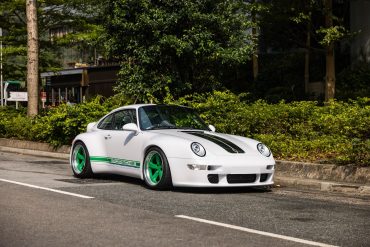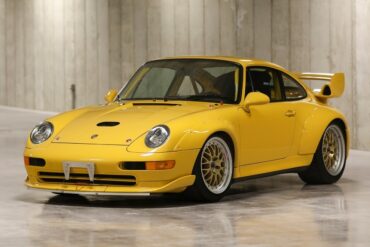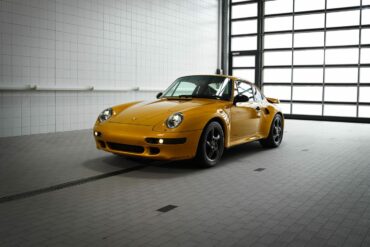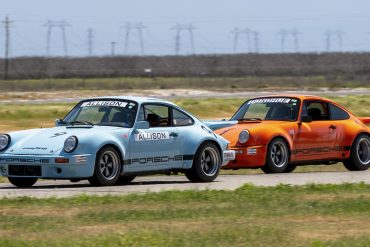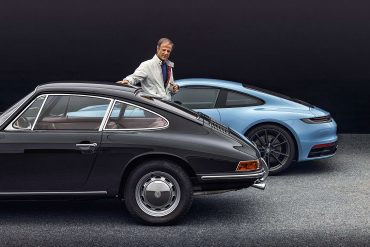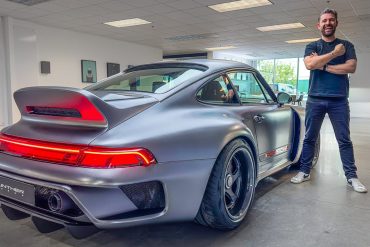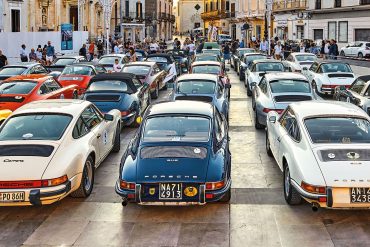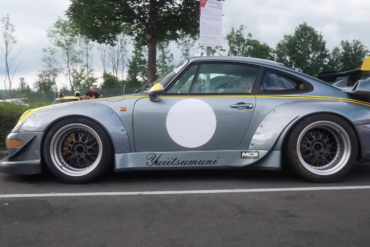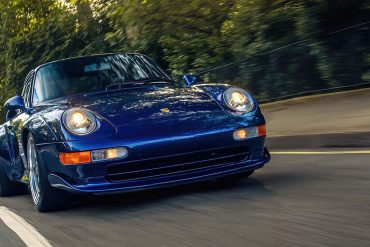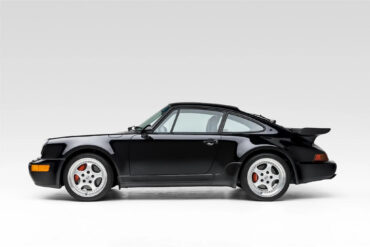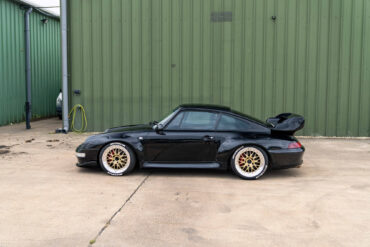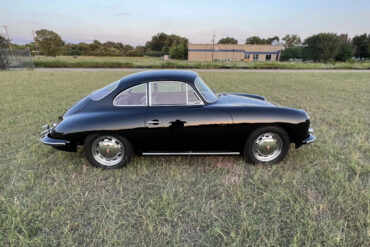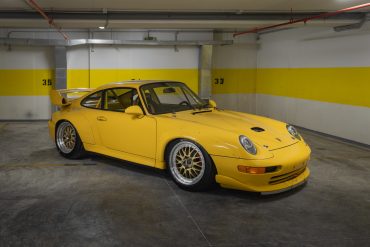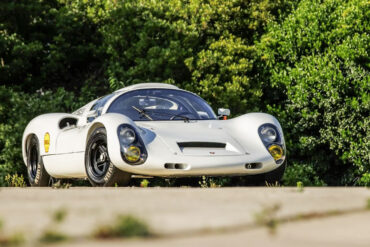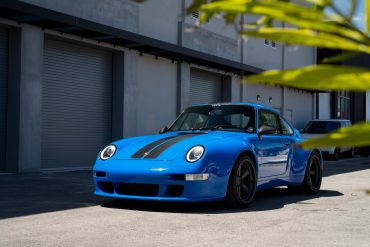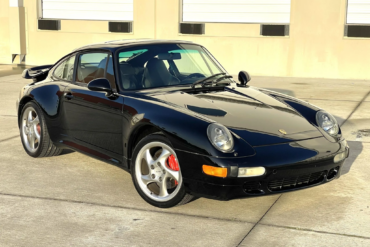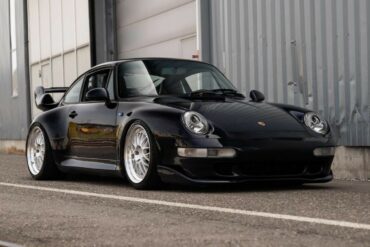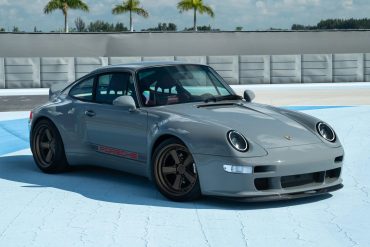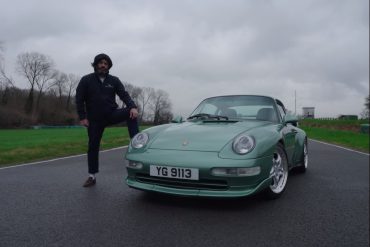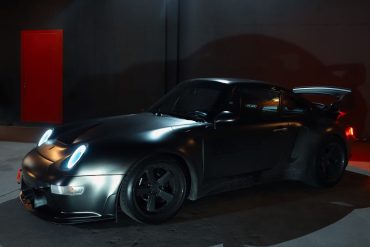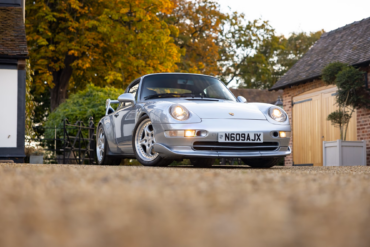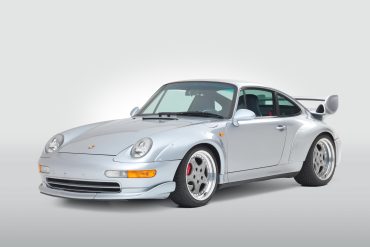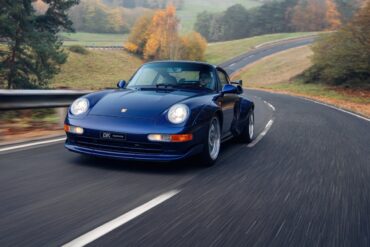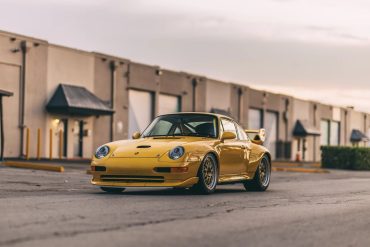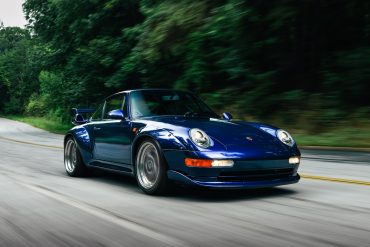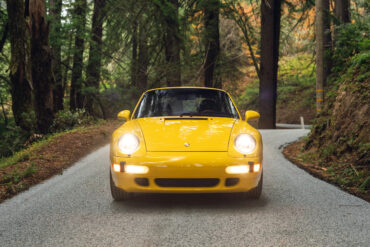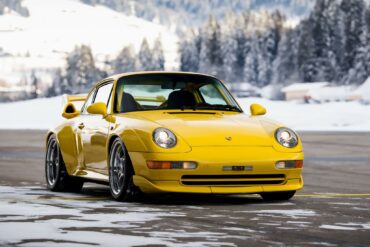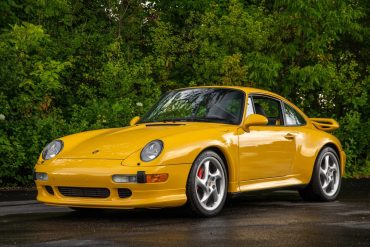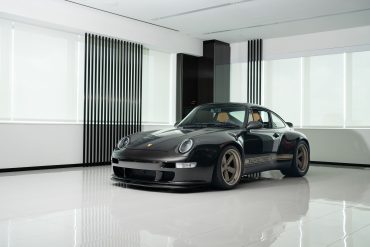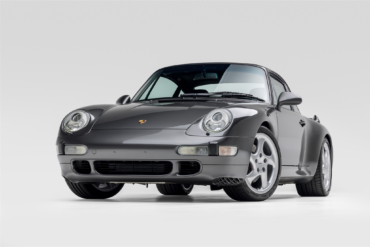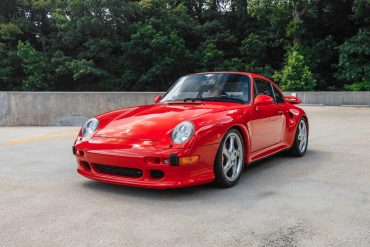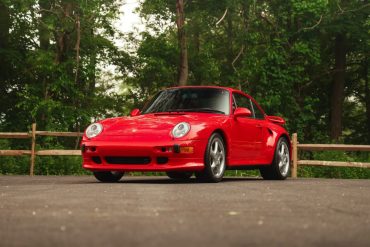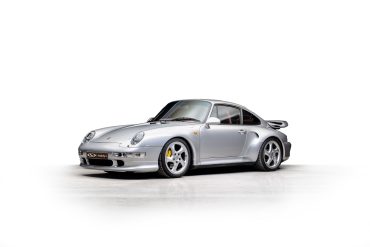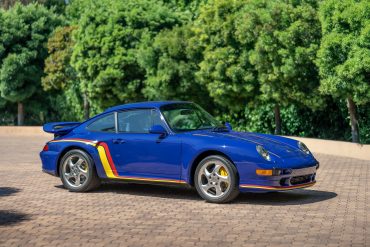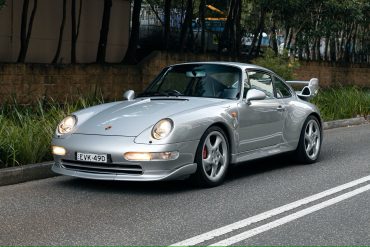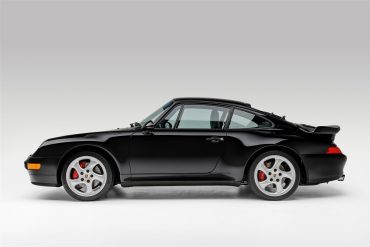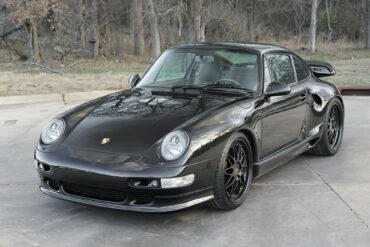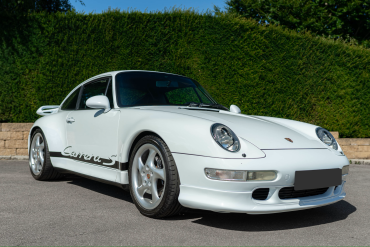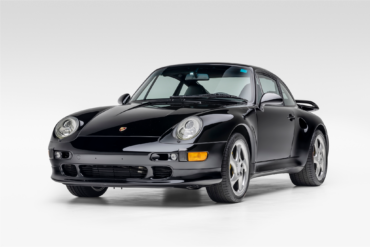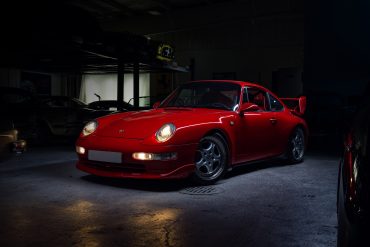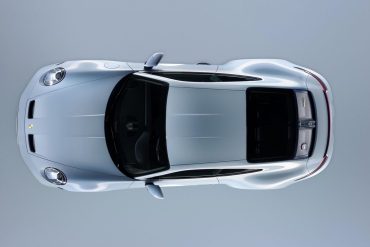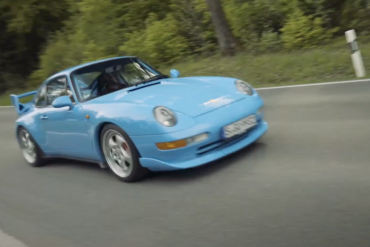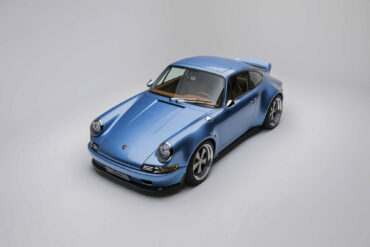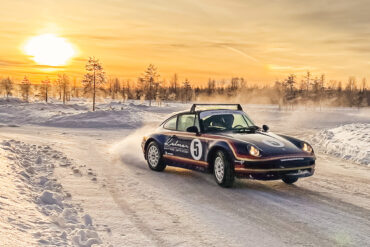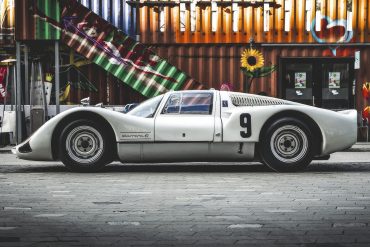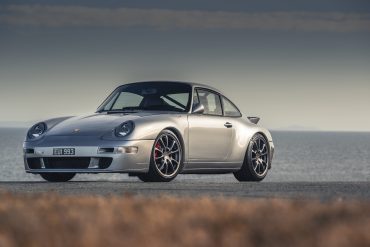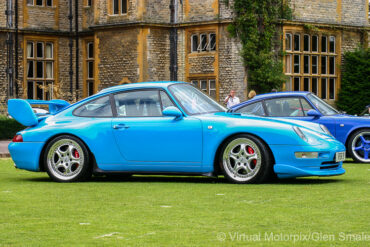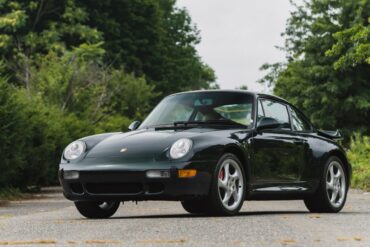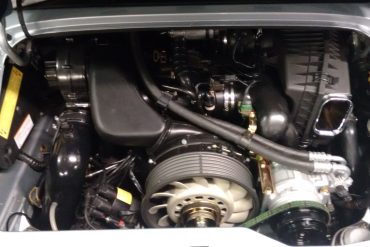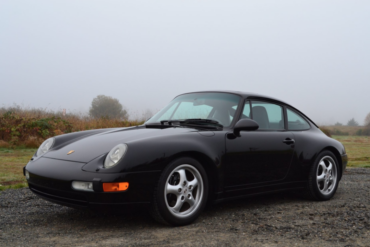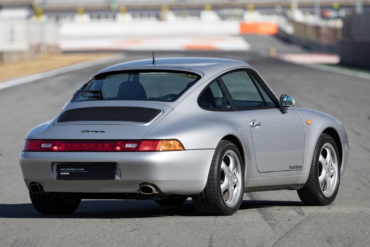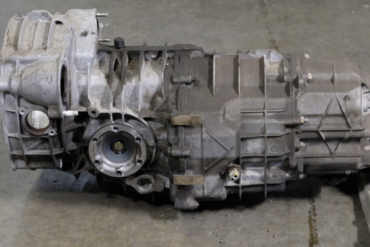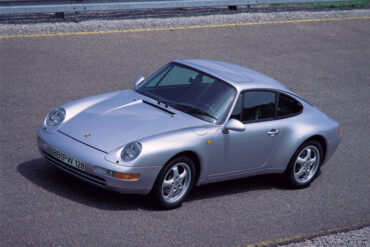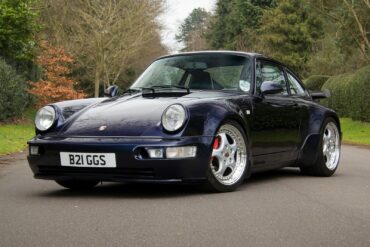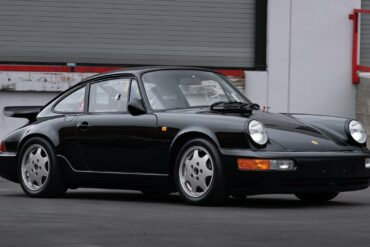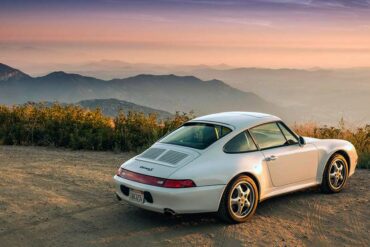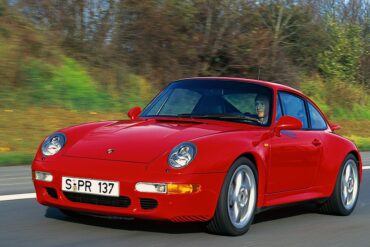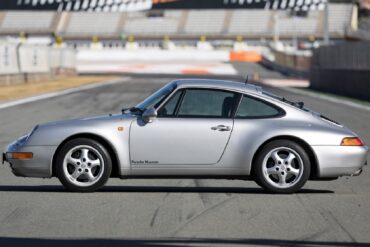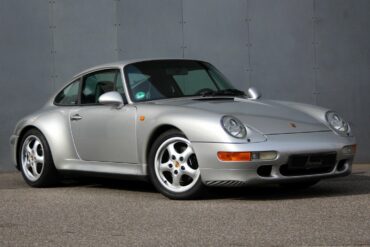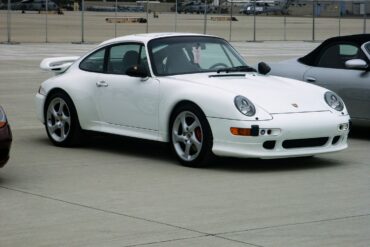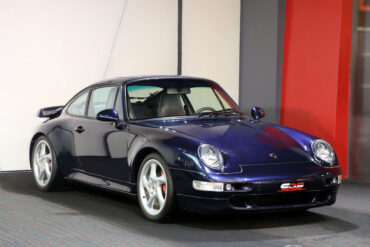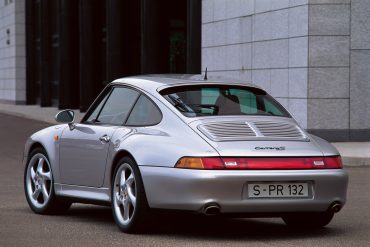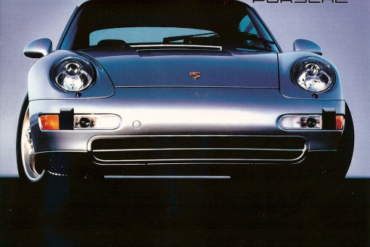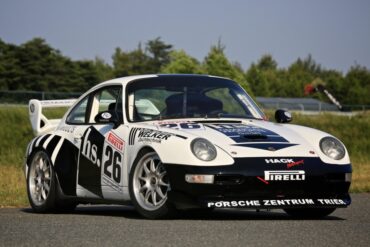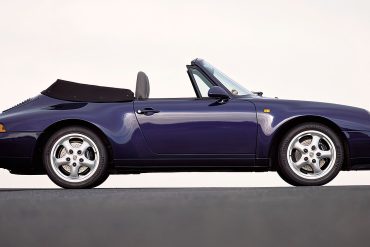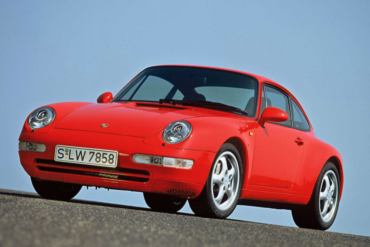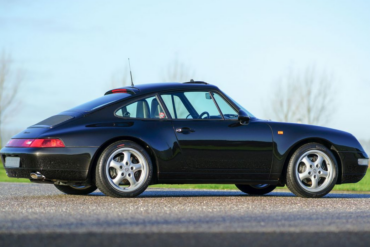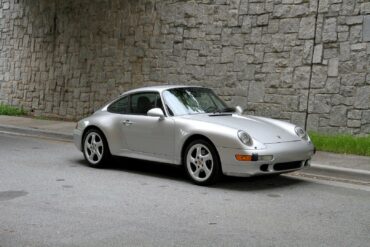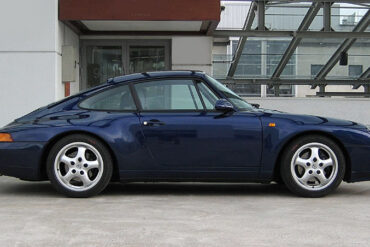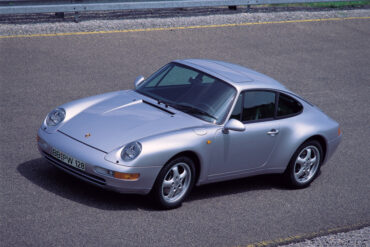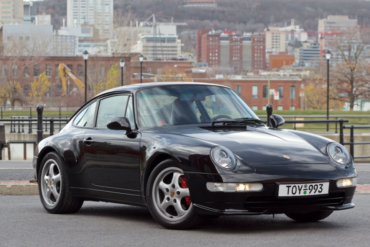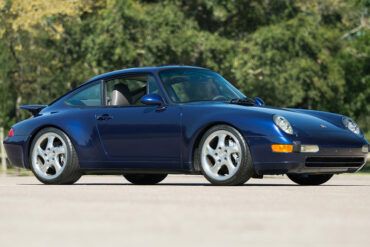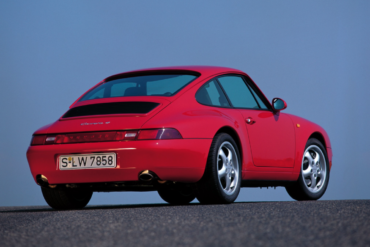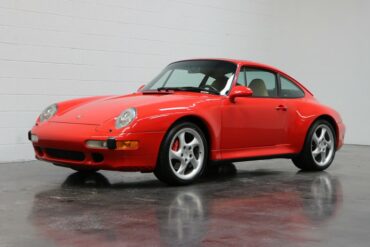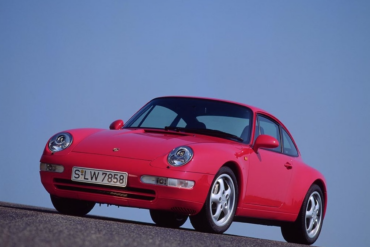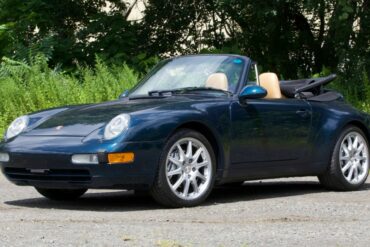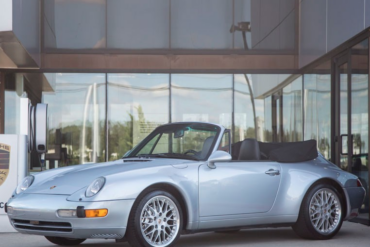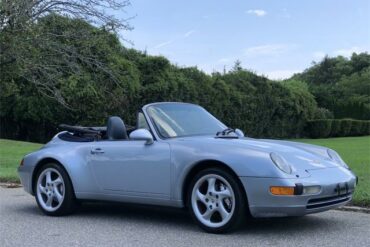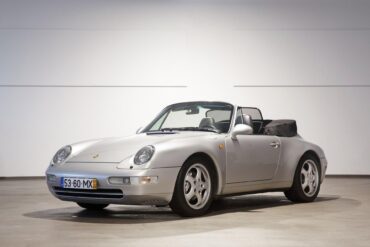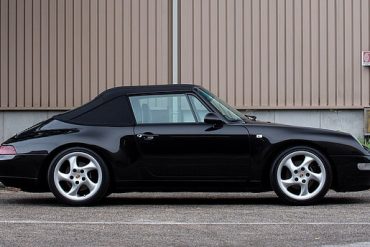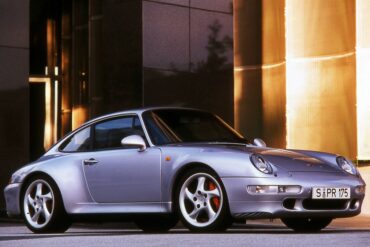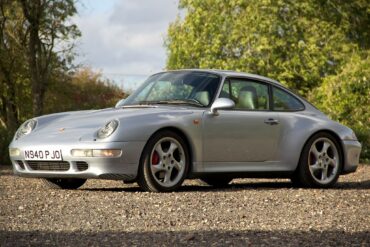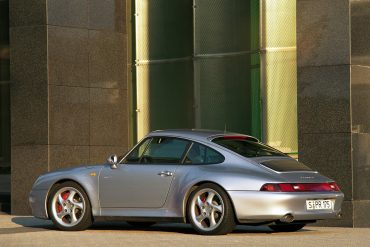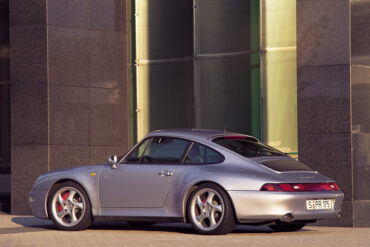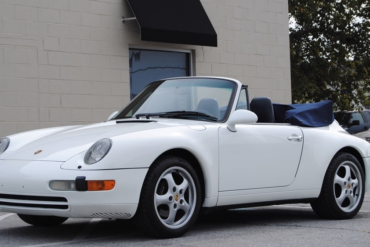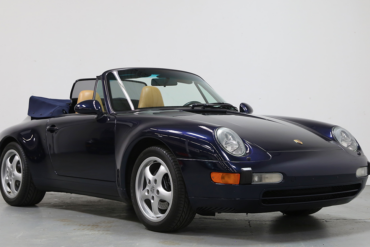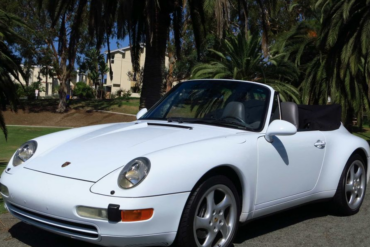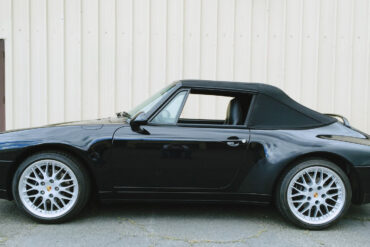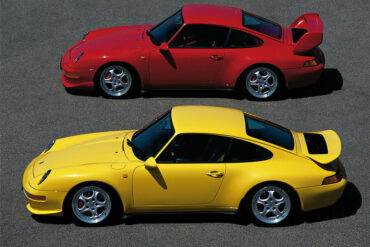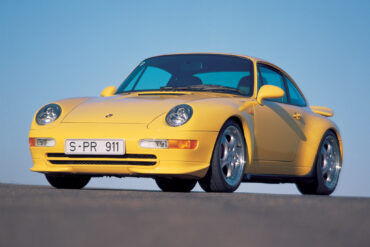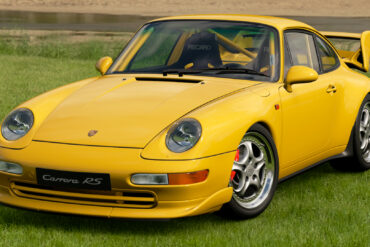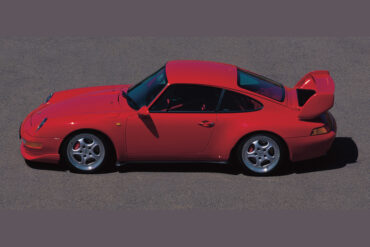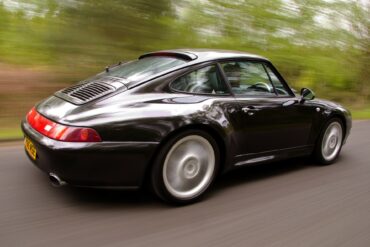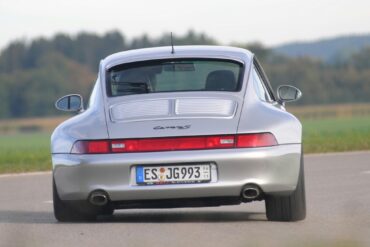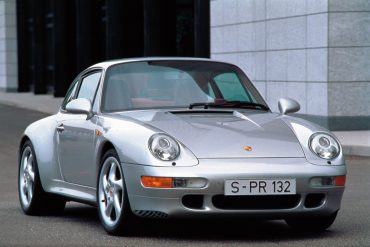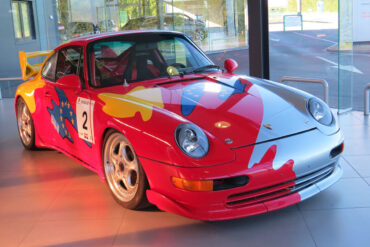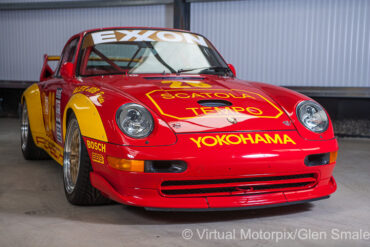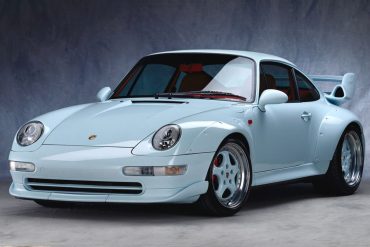Gunther Werks, established in 2017 by the team behind Vorsteiner, took the iconic air-cooled Porsche 993 and crafted a modern...
Porsche 911 (993)
In 1993 the Porsche 993 Carrera was presented to the general public as the successor for the 964. The Porsche 993 was the fourth generation of the Porsche 911 and easily the most loved iteration and the last of the aircooled Porsche 911s. It was more sophisticated and durable than the Type 964 that came before it, the significant technical advances in the underpinnings created a more civilized car and a greatly improved handling experience too. The 993 retained the 3.6 L m64/01 engine from the 964 but it was re-designated as M64/05. The 993 Porsche 911 Carrera was introduced in Coupé and Cabriolet form in 1994. The Targa version followed for the 1996 model year. A year later came the Carrera 4, again in both Coupé and Cabriolet body styles. See all of our Porsche 993 Research.
1996 Porsche 993 GT2R Sold for $665,000 This yellow beauty sold at Pebble Beach by Gooding & Company for a...
Porsche’s New Take On The Old 993 Porsche announced earlier this year that the marque’s 70th anniversary would in part,...
The 15th Targa California rally recently concluded with most drivers logging 1,000+ miles over the roads “less traveled” of California’s...
Evolution, not Revolution Since its debut in 1964, the Porsche 911 has epitomized engineering evolution. Conceived by Ferdinand “Butzi” Porsche,...
A couple of days ago, California-based specialist Gunther Werks revealed their latest creation, the Touring Turbo Edition Coupe, at The...
“To hell with the timing. This is more important,” Wilfried Reinhardt says to himself. He hesitates for just a moment,...
Watch A Legendary RWB Porsche 993 Turbo Rip Around The Nurburgring We just found this awesome video of an 993...
Homologation yields street missile In response to the emergence of the BPR Global GT Endurance Series and other racing series...
Someone is having a Merry Christmas indeed as Bring A Trailer just closed the auction for a previously featured, No...
Collecting Cars is currently offering an impressive 24-car collection of rare exotics by a single owner which houses several Porsches....
Some pretty interesting Porsches are currently being offered at Bring A Trailer at No Reserve: a 1964 Porsche 356C Coupe,...
At their upcoming Monaco auction, RM Sotheby’s is thrilled to offer a pristine 1996 Porsche 911 GT2 with just 48...
It only happens once in a lifetime; your 75th birthday. This June 8th marks Porsche’s 75th anniversary so Bring-a-Trailer auction...
While many have modified the 911 over time, Gunther Werks stands apart, envisioning a scenario where Porsche continued refining the...
The Porsche 911 Turbo also known as the 993 was available between late 1995 to 1998. Powered by a twin-turbocharged...
This Swiss based 993 Turbo looks like it has some really nice touches. The perfect stance....
One of the limited run of 25 Porsche 911 models configured to the 400R standard by Gunther Werks is currently...
Tuthill Porsche has earned acclaim in the rally world, transforming road cars into formidable rally beasts. Notably, they collaborated with...
Since their groundbreaking debut in 2017 with the 400R, Gunther Werks have been pushing boundaries and redefining automotive excellence. Now,...
KALMAR Automotive, enhancer and restorer of bespoke sports cars and special purpose-built adventure vehicles, has delivered its first 7-97 to...
Each year, Porsche enthusiasts from across Norway gather in the picturesque village of Lærdal to celebrate air-cooled Porsche history. Surrounded...
The Carrera RS 3.8 is the ultimate lightweight special edition 911 variant of the 993 Carrera generation. It featured a...
The 993 Porsche 911 GT2 (or GT as it was initially called) was built in order to meet homologation requirements...
Live now on DK Engineering is a one-of-one example of a 1996 Porsche 911 (993) GT2 finished in paint to...
The demise of the FIA World Sportscar Championship in 1992 left a void in international GT racing, but the emergence...
If you want the ultimate version of the air-cooled 911, then you should get this 1996 Porsche 911 GT2 currently...
This 1996 Porsche 993 Turbo has a Paint to Sample Ferrari Giallo (yellow) finish matched with Black Supple Leather interior....
This rare 1996 Porsche GT2, originally designed for GT2 class racing, is based on the 993 Turbo. It features widened...
The 993 Carrera 4S, available from 1995 to 1998 as a 1996 model year onward, was a unique addition to...
The 993-generation 1997 Porsche 911 Remastered by Gunther Werks stands as a sports car that continues to captivate even more...
Bring A Trailer is currently offering a gorgeous example of a 1997 Porsche 911 Turbo, one of the marque’s final...
In 1997, Porsche manufactured a limited run of the 993 Turbo S, which marked the final air-cooled 911 Turbo. These...
The final air-cooled 911 Turbo from Porsche was the Type 993 Turbo S, offering a remarkable conclusion to that era....
In 1997, Porsche produced a limited factory-production run of what is the last air-cooled 911 Turbo, the 993 Turbo S....
In 1997, Porsche introduced the 993 Turbo S, a limited-production model that served as a magnificent farewell to the era...
The Porsche 993 Turbo, introduced during the 993 generation of the 911, revolutionized the sports car landscape. With a 400...
You have less than two hours to decide if you’ll get this 1997 Porsche 911 Turbo from Bring A Trailer...
PCARMARKET is giving you the opportunity to acquire one of the last air-cooled 911 that boasts superb drivability and stunning...
Collecting Cars is currently offering a well-maintained and highly original 1997 Porsche 911 (993) Carrera S. This example is finished...
In 1997, Porsche produced a limited factory-production run of what is the last air-cooled 911 Turbo, the 993 Turbo S....
The Carrera RS Clubsport was a track-focused iteration of the Carrera RS with relatively limited road usability. The Clubsport added...
In the beginning… The engine of the Porsche 911 has come a long way over the past 60 years, now...
I have always been a big fan of Ben Barry and his reviews, so it was nice to stumble upon...
Kaege Restomods Based Germany, Kaege Retro had been creating 993-based cars since 2010. When Roger Kaege decided to build his...
Prepare to be spoiled at Kalmar events Travelling to the capital of Lapland, right on the Arctic Circle, specially prepared...
Background In the Porsche world, “Luftgekühlt” represents all the air-cooled cars in the manufacturer’s history, from the Pre-A 356 through...
Paul Stephens’ latest Autoart customer only gave him one directive, “Take a 993 and make a 25 per cent improvement...
It is forty years since the introduction of Porsche’s first RS, the mighty Carrera RS 2.7, back in 1973. For...
Porsche 911 (993) (1993 – 1998) Story & History Type 993 – The 4th Generation Porsche 911 Premiere: 1993 September...
Porsche 911 (993) Engine Codes The introduction of the model 993 marked the last of the model 911 versions powered...
Porsche 911 (993) Technical Specifications & Model Comparison (European Variants) European specs 911 993...
Porsche 911 (993) Sales & Production Numbers The Porsche 911 (type 964) was considered a sales success, so when the...
Porsche 911 (993) Transmission Codes The transmission number code is found on the transmission data plate. There were two codes...
Porsche Option Codes – Porsche 911 Type 993 (1994 Model Year) Looking to decode your 1994 Porsche 911 option codes?...
Porsche Option Codes – Porsche 911 (1995 Model Year) Looking to decode your 1995 Porsche 911 option codes? Want to...
Porsche Option Codes – Porsche 911 (1996 Model Year) Looking to decode your 1996 Porsche 911 option codes? Want to...
Porsche Option Codes – Porsche 911 (1997 Model Year) Looking to decode your 1997 Porsche 911 option codes? Want to...
Porsche Option Codes – Porsche 911 (1998 Model Year) Looking to decode your 1998 Porsche 911 option codes? Want to...
1994-1998 Porsche 911 Engine Torque Directions This tightening torque specs list is ONLY for the following Porsche models and years:...
Porsche 911 (993) Paint Color Options This post outlines all the color options for the 993 generation Porsche 911 over...
1994-1998 Porsche 911 (993) Carrera, Carrera S, Carrera 4, Carrera 4S, Turbo Service Schedule This maintenance service schedule checklist is...
Porsche 993 VIN Numbers Below is our detailed explanation of the 993 VIN codes. Our easy to use guide should...
Porsche 911 Spare Parts Catalogs (993, 1994 – 1998 Model Year) These official Porsche PET Diagrams and codes for the...
Porsche 911 Sales Brochures (Type 993) After lots of digging and searching, we have found only two Porsche sales brochures...
993 Carrera Cup Champions & Results 993 Carrera Supercup 1994 Uwe Alzen Emmanuel Collard Jean-Pierre Malcher 1995 Jean-Pierre Malcher Jürgen...
Introduced in 1994 the Porsche 911 Cabriolet was more of a Grand Tourismo vehicle than a sports car. The 911 Cabrio featured the same cues as its coupe version, but with a few differences apart from the lack of a fixed roof, of course. The 3.6-liter engine was offered in two versions, with 275 hp and 285 hp. The latter featured the VarioCam system. Both versions were mated to either a 6-speed manual or a 4-speed automatic.
1995 Porsche 911 Carrera (993) Technical Specifications Engine Type Flat 6 Induction Naturally Aspirated Cooling Air/oil-cooled Valvetrain Single overhead camshaft...
1996 Porsche 911 Carrera (993) Technical Specifications Engine Type Flat 6 Induction Naturally Aspirated Cooling Air/oil-cooled Valvetrain Single overhead camshaft...
1997 Porsche 911 Carrera (993) Technical Specifications Engine Type Flat 6 Induction Naturally Aspirated Cooling Air/oil-cooled Valvetrain Single overhead camshaft...
1998 Porsche 911 Carrera (993) Technical Specifications Engine Type Flat 6 Induction Naturally Aspirated Cooling Air/oil-cooled Valvetrain Single overhead camshaft...
Introduced in late 1994 the standard 911 Carrera of the 993 generation was fitted with a development of the M64 3.6-liter flat six that had been found in the prior 964 generation. With a redesigned exhaust system and new hydraulic lifters, the engine produced 272 horsepower. For the 1996 model year, a Targa variant was introduced, and a variable intake runner system (called VarioRam) was added to the entire Carrera lineup, bumping horsepower to 285. Approximately 23,000 coupes were built, 15,500 cabriolets, and 4,500 Targa's, in both manual and automatic (Tiptronic) transmission. Overlapping with the last year of production, it was replaced by the 911 Carrera of the 996 generation for model year 1998.
1995 Porsche 911 Carrera 4 (993) Technical Specifications Engine Type Flat 6 Induction Naturally Aspirated Cooling Air/oil-cooled Valvetrain Single overhead...
1996 Porsche 911 Carrera 4 (993) Technical Specifications Engine Type Flat 6 Induction Naturally Aspirated Cooling Air/oil-cooled Valvetrain Single overhead...
1997 Porsche 911 Carrera 4 (993) Technical Specifications Engine Type Flat 6 Induction Naturally Aspirated Cooling Air/oil-cooled Valvetrain Single overhead...
1998 Porsche 911 Carrera 4 (993) Technical Specifications Engine Type Flat 6 Induction Naturally Aspirated Cooling Air/oil-cooled Valvetrain Single overhead...
The 993 Carrera 4, sold between 1995 and 1998, uses the same powerplant as the standard 993 Carrera, but puts power down to all four wheels through a 6-speed manual transmission. A “Carrera 4” badge on the tail, along with silver-painted brake calipers and clear front and side turn signals, help distinguish the all-wheel drive C4 from the C2 sibling. Approximately 4,700 coupes and 2,500 cabriolets were made. It was replaced by the Porsche 911 Carrera 4 (996 generation) in 1999.
1995 Porsche 911 Carrera 4 Cabriolet (993) Technical Specifications Engine Type Flat 6 Induction Naturally Aspirated Cooling Air/oil-cooled Valvetrain Single...
1996 Porsche 911 Carrera 4 Cabriolet (993) Technical Specifications Engine Type Flat 6 Induction Naturally Aspirated Cooling Air/oil-cooled Valvetrain Single...
1997 Porsche 911 Carrera 4 Cabriolet (993) Technical Specifications Engine Type Flat 6 Induction Naturally Aspirated Cooling Air/oil-cooled Valvetrain Single...
1998 Porsche 911 Carrera 4 Cabriolet (993) Technical Specifications Engine Type Flat 6 Induction Naturally Aspirated Cooling Air/oil-cooled Valvetrain Single...
2,500 cabriolets were made in the 993 Carrera 4. The 993 Carrera 4, sold between 1995 and 1998, uses the same powerplant as the standard 993 Carrera, but puts power down to all four wheels through a 6-speed manual transmission. A “Carrera 4” badge on the tail, along with silver-painted brake calipers and clear front and side turn signals, help distinguish the all-wheel drive C4 from the C2 sibling.
1996 Porsche 911 Carrera 4S (993) Technical Specifications Engine Type Flat 6 Induction Naturally Aspirated Cooling Air/oil-cooled Valvetrain Single overhead...
1997 Porsche 911 Carrera 4S (993) Technical Specifications Engine Type Flat 6 Induction Naturally Aspirated Cooling Air/oil-cooled Valvetrain Single overhead...
1998 Porsche 911 Carrera 4S (993) Technical Specifications Engine Type Flat 6 Induction Naturally Aspirated Cooling Air/oil-cooled Valvetrain Single overhead...
After introducing the Porsche Carrera S with the body carried-over from the Turbo version, customers asked about an all-wheel-drive version for it. The 993 Carrera 4S was sold between 1995 to 1998. Much like the 993 Carrera S, the 993 Carrera 4S takes the 993 Carrera 4 powertrain and fits it into the widebody 993 Turbo shell, sporting 18" alloy wheels. The engine was the same 3.6-liter naturally aspirated, but it was offered in the higher power output of 285 hp. As with the Carrera 4, it was only available with a 6-speed manual transmission. The 4S did not have a cabriolet version.
1995 Porsche 911 Carrera Cabriolet (993) Technical Specifications Engine Type Flat 6 Induction Naturally Aspirated Cooling Air/oil-cooled Valvetrain Single overhead...
1996 Porsche 911 Carrera Cabriolet (993) Technical Specifications Engine Type Flat 6 Induction Naturally Aspirated Cooling Air/oil-cooled Valvetrain Single overhead...
1997 Porsche 911 Carrera Cabriolet (993) Technical Specifications Engine Type Flat 6 Induction Naturally Aspirated Cooling Air/oil-cooled Valvetrain Single overhead...
1998 Porsche 911 Carrera Cabriolet (993) Technical Specifications Engine Type Flat 6 Induction Naturally Aspirated Cooling Air/oil-cooled Valvetrain Single overhead...
1995-1996 Porsche 911 Carrera RS 3.8 (993) Technical Specifications Model Porsche 911 Carrera RS 3.8 (993) Model Years 1995 and...
The 993 Carrera RS is a lightweight, stiffer version of the naturally-aspirated 993 Carrera meant for ultimate street performance. At its heart was the 3.8-liter normally aspirated Type M64/20 engine producing 300 bhp at 6,500 rpm along with 262 foot-pounds of torque at 5,400 rpm. Looking to save as much weight as possible, every non-essential item from the car was removed. The Carrera RS tipped the scales at a 1,280 kg. About 1,000 Carrera RS were built, making it one of the rarest and most collectable 993-generation 911's produced. In addition to the Base Trim it was also available as the race-ready, street legal, RS Clubsport (option M003).
1995-1996 Porsche 911 Carrera RS 3.8 Clubsport (993) Technical Specifications Model Porsche 911 Carrera RS 3.8 (993) Model Years 1995...
The 993 Carrera RS Clubsport, 213 of which were built to meet the FIA GT2 homologation requirements, is a race-ready, although street legal variant of the 993 Carrera RS, not to be confused with the track only 993 Carrera Cup RSR. Emphasizing its competition credentials, the 993 Carrera RS Clubsport came with a welded-in roll cage as standard, considerably increasing its rigidity, racing bucket seats, six-point safety harnesses, battery isolator switch, fire extinguisher, and a huge fixed rear wing, the latter also available on the 'base model' Carrera RS.
1997 Porsche 911 Carrera S (993) Technical Specifications Engine Type Flat 6 Induction Naturally Aspirated Cooling Air/oil-cooled Valvetrain Single overhead...
1998 Porsche 911 Carrera S (993) Technical Specifications Engine Type Flat 6 Induction Naturally Aspirated Cooling Air/oil-cooled Valvetrain Single overhead...
The Carrera S was the ultimate, naturally aspirated version of the Carrera 2. Porsche decided to offer something more to its customers when it launched the Carrera S version. It featured a stiffer and lowered suspension. Its wider tires made it better in the corners and faster around a race-track than its Carrera 2 sibling. The Carrera S took its bodywork from the Porsche Turbo. But it didn't get the turbocharger or the all-wheel-drive system. Its wider rear fenders and lowered stance than the Carrera lineup made it a desirable car for the Porsche fans. The engine was the same 3.6-liter naturally aspirated, but it was offered in the higher power output of 285 hp. The only transmission available was a 6-speed manual.
The 993 Carrera Cup 3.8 was developed from the 993 Carrera RS, as purpose-built competition car designed by Porsche for its single-model racing series taking place around the world. Replacing the 964 Carrera Cup, the 993 Carrera Cup had a claimed 315 bhp on tap, weighed only 1,100kg, and offered a top speed of around 270km/h (170mph). Approximately 216 samples were built. The Carrera Cup should not be confused witth the Carrera RSR, or the 993 Carrera RS Clubsport version.
The 993 Carrera RSR takes the 993 Carrera RS formula and makes it even more track-ready by adding a roll-cage and removing carpet, power windows, and a/c. There were just thirty Porsche 911 Cup 3.8 RSR (Type 993) race cars produced for the 1997 season. This model was the last of the breed of air-cooled, naturally-aspirated 911 race cars to come from the Weissach race department before the introduction of the Type 996 water-cooled cars. To find a 993 3.8 RSR that participated in some of the world’s toughest endurance races in period, and survived unscathed and unmolested, is quite rare.
This bespoke Porsche 993 is no stranger to the Porsche world, though very few people are likely to have ever...


